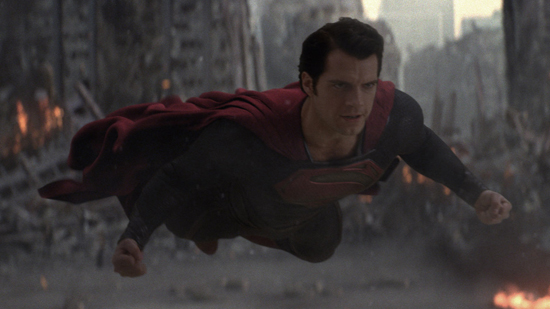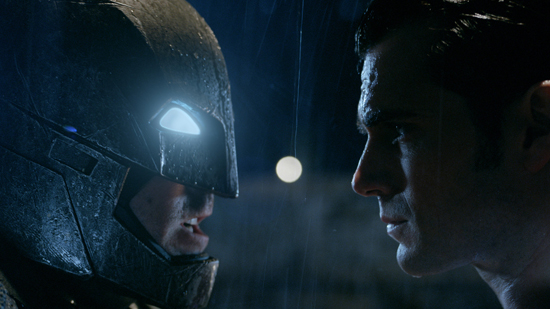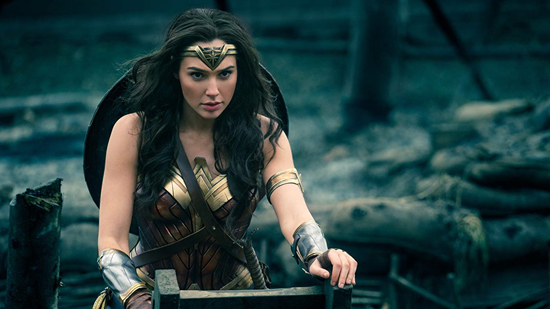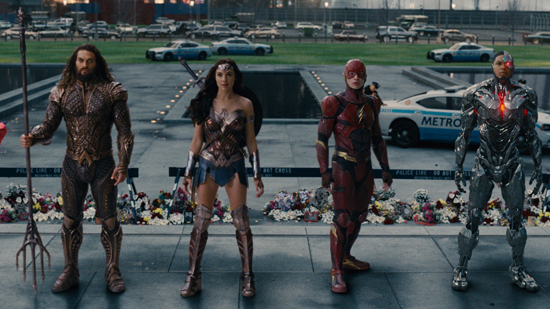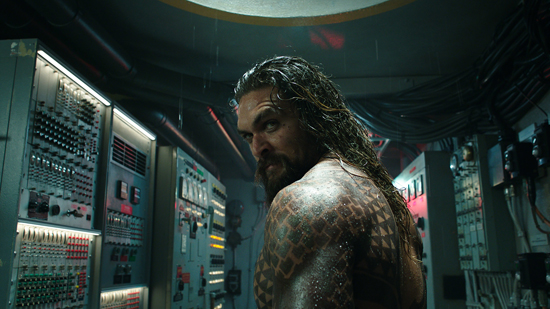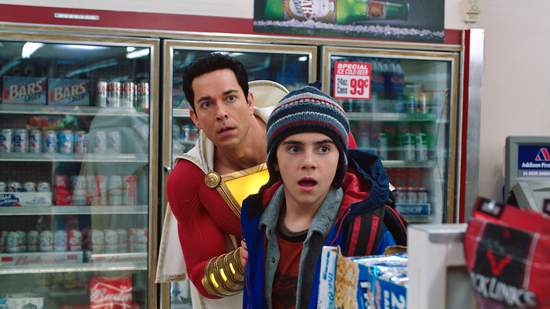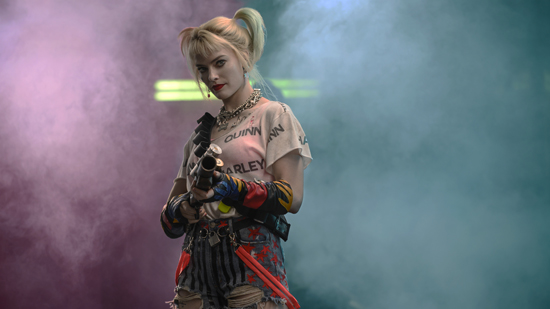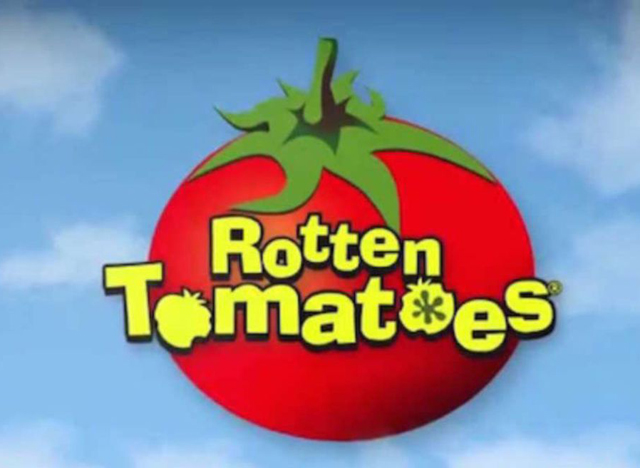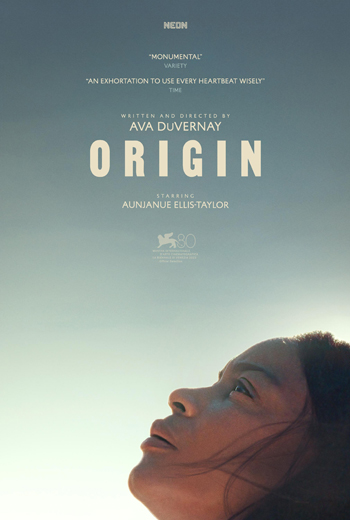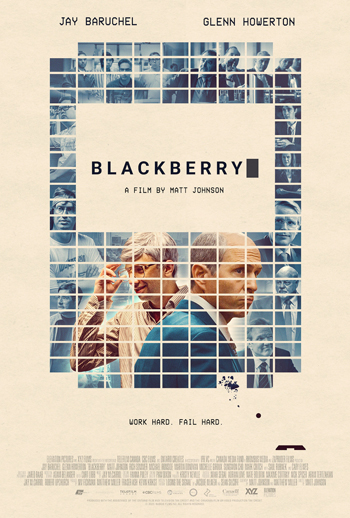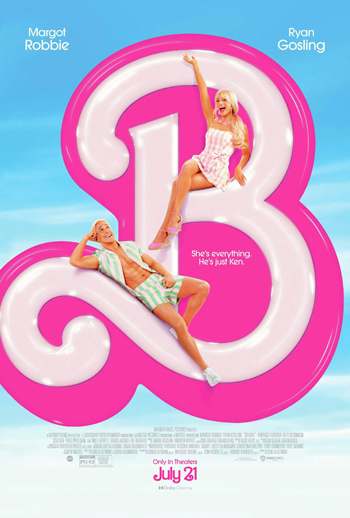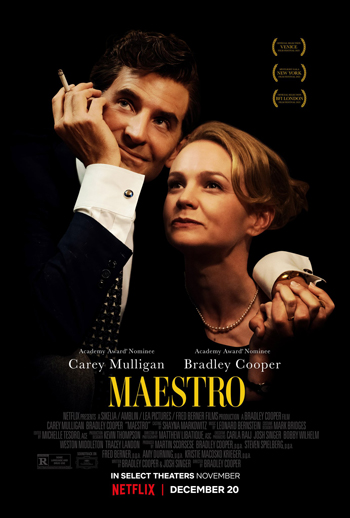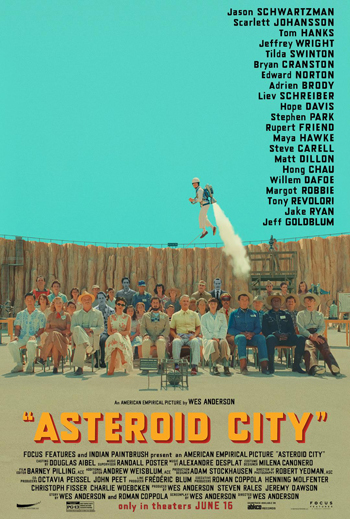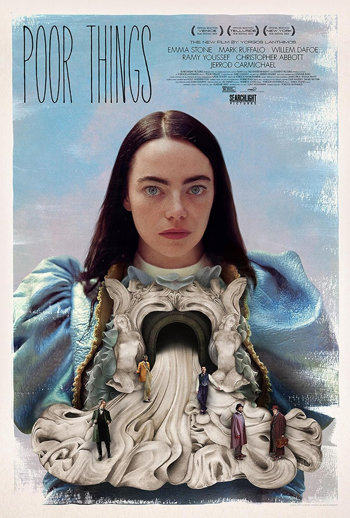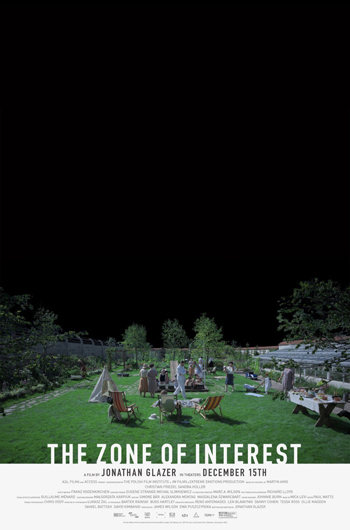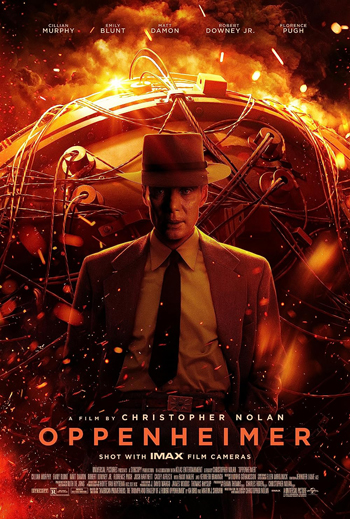
There’s one thing that is interesting about the growing list of Oscar winners over it’s 96 year history. That thing is how each year’s selection of winner becomes a bit of a time capsule of their era in film. Of course there are some winners that do remain timeless and feel just as fresh and entertaining today as they were when they first premiered in theaters, such as Casablanca (1943), Lawrence of Arabia (1962), or both The Godfather (1972) and The Godfather Part II (1974). But then there are some winners that don’t quite translate as well over the years as the tastes of movie audiences change. For some of them, historical context is necessary towards understanding why this particular film rose to the top of the Oscar field. Some are just due to studio politics, such as the dated and cliché The Greatest Show on Earth (1952) beating out the timeless High Noon (1952). But other times a winner is just the product of it’s era and just doesn’t translate well over time. It doesn’t always mean that the movie is bad, but it is clear that some movies age poorly. By all accounts How Green Was My Valley (1941) is a charming little family drama, but the only thing we seem to know about it today is that it’s the movie that beat Citizen Kane (1941) for Best Picture. For their time, honoring these kinds of movies would’ve made sense, because they reflected the mood of Academy voter, who have more than not favored the more uplifting film. But, there are times when you see the Academy choose a winner that feels like a breakthrough film at the time which unfortunately over the years begins to look more and more like an out of touch exercise with hindsight. And I don’t think that I have ever seen a Best Picture winner fall of the pedestal harder than the 1999 champion American Beauty. 25 years ago, American Beauty looked like it was going to be the herald for a new era in cinema. Nowadays, it comes across as naïve and pandering, and even more surprisingly, almost completely forgotten.
I remember the way that Hollywood fawned over this film when it first came out. This was going to be the movie that shaped a new era in Hollywood with it’s tackling of then taboo subjects of suburban malaise, teenage sexuality, and homophobia. It also had a high pedigree of talent behind it. With the backing of Hollywood rising star Dreamworks and it’s trio of super producers Katzenberg, Geffen and Spielberg, this movie was design from the get go to dazzle the Academy. West End stage director Sam Mendes was called upon to make his big screen debut after dazzling the theater world with his acclaimed re-imagining of Cabaret for both London and Broadway. Veteran cinematographer Conrad Hall (Butch Cassidy and the Sundance Kid) was hired to shoot the picture and Thomas Newman was given the duties of scoring the film, and in each case they were breaking the mold of a Hollywood prestige picture. Then there was the cast, which included established stars like Kevin Spacey and Annette Benning as well as young newcomers like Thora Birch, Wes Bentley, and Mena Suvari. And it was all centered around a screenplay from longtime sitcom writer Alan Ball that Spielberg was said to have fallen in love with immediately. Overall, this was a movie that came together with all the right ingredients at the right time, which is the case with most movies that end up collecting multiple awards. But for it’s time, this movie was believed to be something else entirely. Understanding the context of it’s release, American Beauty was coming out at the tail end of the 1990’s, which at that time had seen high budget period dramas dominate at the Oscars, including Braveheart (1995), The English Patient (1996), and Titanic (1997). The year prior, the very safe pick of Shakespeare in Love (1998) had upset Saving Private Ryan (1998), so the Academy was beginning to be criticized for being out of touch, which may have been what prompted the turn that benefitted American Beauty in the eyes of Academy voters. And boy did it, as it not only took home Best Picture, but it was one Best Actress award short of completing the Oscar Hat Trick, which is winning the top five awards (Screenplay, Actor, Actress, Director, Picture), a feat only three films have ever achieved (1934’s It Happened One Night, 1975’s One Flew Over the Cuckoo’s Nest and 1991’s The Silence of the Lambs).
So what was it about the film that cast this spell on the Academy. The movie looks at the lives of two suburban families going through various crises. The Burnhams are a nuclear American family on the verge of implosion after years of sexual frustration on the part of the depressed patriarch Lester (Kevin Spacey). Living next door are the Fitts family, which is lorded over by a disciplinarian and homophobic father named Frank (Chris Cooper) who clashes constantly with his artistically inclined son Ricky (Wes Bentley). Both in many ways represented the ideals of the nuclear American family that so many in conservative media like to push forward, and this movie takes a sledgehammer to that image and exposes all the cracks underneath. Lester is depressed by his lack of urgency over his life, and then is “awoken” after being aroused by his daughter’s “sexy” best friend. From that moment, he disrupts all of the routines that have governed his life and begins to do things his way, much to the chagrin of his career driven wife (Annette Benning), whose got her own subversive issues going on. And of course the kids are going through their own hormonal awakening throughout the movie. And then there is the Colonel, whose external homophobia we learn is a mask for his own self-hatred. It’s in general a critique of the societal masks that we impose on ourselves to function in a modern society, and the movie examines if those masks themselves are part of the problem we face everyday. After a long line of safe, studio driven fare, I can see how the Academy believed that American Beauty was this subversive gem that would start a new era of filmmaking in Hollywood. In some ways it kind of did, but not in a way that would put American Beauty as the touchstone film that they thought it would be. In general, 1999 was a year full of movies that would shake up Hollywood, and some have held up much better over time than American Beauty did like Fight Club (1999), The Matrix (1999), Magnolia (1999) and The Talented Mr. Ripley (1999). Those films continue to inspire filmmakers to this day, but I can’t think of any other movie that strived to be the next American Beauty.
So, why is it that 25 years later American Beauty has fallen off people’s radar despite being such a big winner at the Oscars. It’s been out of print as a physical media release for nearly a decade now, and you’d have to dig pretty deep to find it on streaming (currently it’s on Paramount+ along with most Dreamworks catalog titles). I think the primary reason that people no longer talk about this movie these days is pretty obvious, so I’ll just get to the elephant in the room. The depiction of Lester Burnham in the movie seems to diminish the pedophiliac nature of his character. He is the main protagonist of the story (the whole thing is framed through his post-death narration) so we are observing the movie through his perspective. And Lester’s main motivation is that he wants to have sex with an underage girl. 25 years later this element of the character cannot in any way be justified. Now truth be told, he doesn’t go through with it, but the movie does comes as close to the edge as it can with the subject matter and at the same time, this sexual drive is seen as a positive thing for his character development because it’s what pulls Lester out of his mid-life funk and let’s him feel alive again. The implications of that are just icky in today’s culture, especially in a #MeToo world. But if it was just the character development in the movie, maybe you could just dismiss it as out of touch for it’s time. Unfortunately, we have learned of Kevin Spacey’s real life sex crimes, and it make the character of Lester Burnham almost unbearable to watch now. Unlike Lester, we know Spacey actually went through with his molestation of underage victims, by his own admission. It’s a disgraceful revelation that in many ways has clouded the reputation of American Beauty more than anything else. With things hitting pretty close to real life, I wonder if Alan Ball has any regrets in letting his main character be let off the hook for almost committing statutory rape. I get that exposing the cracks underneath polite American society was the aim, but some things need to be called out as unacceptable and this movie just seemed to forget that.
Before the exposure of Kevin Spacey as a perverted monster, American Beauty faced another backlash over the years since it’s release, and that was the perception that it was a pretentious movie. American Beauty rides that fine line between the naturalistic and heightened sense of reality. While the movie is grounded in a contemporary (for it’s time) American setting, the film also takes several turns into flights of fantasy, mainly as a way of looking into the minds of the characters. We especially see this with the moments that Lester lusts after the character Angela (Mena Suvari), with deep red roses being a heavy metaphoric presence. Sure, those moments are beautifully shot by the late Conrad Hall, but in the end they are more style over substance given how heavy handed these moments are. Still, those are the moments that helped to sell the movie and remain the most memorable to this day, so that’s a credit to the craft of the movie. Where most of the pretention lies is with the dialogue found in Alan Ball’s script. Originally, American Beauty was originally conceived as a stage play, and that helps to make the heightened dialogue feel more within context. The characters in this movie do not talk like real human beings, but more like they are characters within a play whom the actors must imbue with heightened emotions. For the most part, the lines that are supposed to be profound just become annoyingly cloy. This is especially true with the character of Ricky, whose artistic sensibilities come across as particularly hollow. The notorious trash bag scene over time has become the poster child moment of this movie’s pretentious reputation. What was supposed to sound deep and poetic in it’s day now in today’s eyes just looks like a privileged white boy’s low effort attempt at filmmaking. There are stronger moments in the movie that do still work, like the escalating tension of the dinner scene where Lester throws the plate of asparagus at the wall, but for the most part you can tell a lot of this script would’ve hit a bit harder if performed on a stage, instead of being awkwardly translated for the screen.
There is one thing about the movie that I do think has subtly worked it’s way through the culture at large since it’s premiere. The character of Lester Burnham in many ways started the trend of “difficult men” on both the small and little screen in the 20 years since it’s release. This is particularly the case on television, where you see characters like Tony Soprano and Walter White emerge in pop culture in the 2000’s and beyond. While Lester Burnham was not the first of these kinds of characters (a main protagonist that is interesting to dissect while at the same time hard to sympathize), he certainly helped to popularize the type. As problematic as Lester is, his character evolution is in itself an interesting catalyst in examining the subversive fractures of American society, particularly when it comes to masculinity. You see many more characters of this kind post-American Beauty than before, which in the 80’s and 90’s leading up to it kind of presented a more idealized portrayal of the modern American male. Lester Burnham was a deeply flawed individual, but that ascension of his own worst instincts bubbling to the surface made him a far more interesting character as a result, and it changed the perception of what constituted a portrayal of masculinity in movies thereafter. But, at the same time, the movie does have it’s own dated portrayals of masculine/feminine dynamic that haven’t aged very well either. What is surprising is that Alan Ball, who is a queer writer himself, seems to perpetuate the antiquated idea of deep in the closet resentment being the driving force behind homophobia. We learn that Colonel Fitts’ virulent homophobia is it’s own mask for his own closeted feelings, but this feels like a story element that minimalizes the horrific nature of violence towards the gay community. Yes, there are cases where homophobes have been exposed as having secret gay affairs, but for the most part violence committed against the gay community has just been the result of pure bigotry. To pin internalized homophobia around Colonel Fitts’ motivations is a very reductive approach to a very serious problem that still affects the queer community in American society today. I feel that with hindsight, this is a part of Alan Ball’s script that likely would be much more nuanced today.
The movie primarily has the problem of just being too tied in with it’s era. It is a very Clinton-era movie, made back in a time when the worst that this country was going through was the scandalous thought of an American president being unfaithful to his wife. In some ways, I kind of see what may have inspired this movie to begin with. American Beauty definitely feels like a cry out into the dark abyss of modern American malaise. It was a post-Cold War world where we as a society were growing comfortable with the idea of being the world’s sole super power. American Beauty was very much a wake up call to remind us Americans that society is not as candy colored as it seems. America is a complex society of many divisions, and trying to mask over that with an unrealistic picture of polite, suburban values is doing more harm than good. Now, the delivery of that message in American Beauty is undermined by it’s own pretentions, but the underlying idea behind it is still sound. One thing that I think unravels the movie as a whole from achieving it’s goal is the way that it handles the ending. Spoiler Warning, but the movie closes with the murder of Lester Burnham. The death has been telegraphed throughout the movie, as Lester is speaking in narration beyond the grave (an inspiration from the classic Sunset Boulevard). What I think would have made the movie much more of a masterpiece is if it left the identity of the murderer ambiguous. We see fully who pulled the trigger on Lester (Colonel Fitts) and it kind of robs the movie of it’s most profound moment. There are several culprits who may have wanted Lester dead by the end, and the mystery it left behind would’ve been a great thing to leave the audience with. This moment would’ve felt even more poignant years after, because in the context of the movie, Lester’s murder is the catalyst for destroying any remaining perception of the perfect American idealized world left in the lives of these characters. Honestly, there’s a story to be told about what happened to all these characters afterward, because just like the families in the movie, America itself was on the verge of it’s own traumatic upheaval. American Beauty was the first Best Picture winner of the new millennium, and in the 25 years since America has seen the 9/11 attacks, decades of war, economic upheaval, a rise in Fascism, and a crippling pandemic. American Beauty warns us of how we grow too complacent sometimes, and the years since have only reinforced how much we take for granted with our own comfort.
American Beauty unfortunately is undermined with it’s own dated sense of values from the time it was first written and filmed. The world has changed considerably in the last 25 years, and a pretentious examination of suburban malaise just doesn’t have the sting that it used to. The fall from grace that Kevin Spacey has gone through hasn’t helped either. Still, there are many things about American Beauty that still hold up very well. One is Annette Benning’s incredible performance as Carolyn Burnham. Her career obsessed matriarch driven to the extreme to uphold her place in society is still a potent character portrayal. The scene where she has an emotional breakdown after having a terrible Open House showing for her clients, with the backlighting of the closed blinds perfectly captured by Conrad Hall’s camera, is a definite highlight of the movie. And unlike Spacey, her career is still in top form as Ms. Benning has just been nominated for Best Actress at the Oscars again for the movie Nyad (2023); he fifth overall. Sam Mendes, who is only one of three directors to ever win for a debut film, has only gotten better in the last 25 years as a filmmaker. His follow-up to American Beauty was in my opinion his masterpiece with the amazing Road to Perdition (2002), and he’s made many other astonishing films such as Skyfall (2012) and 1917 (2019) since then. Conrad Hall would sadly deliver his swan song with Road to Perdition as he passed away before it’s release, and he won a posthumous Oscar for his work. Both that and American Beauty represented a fantastic late career resurgence for one of the master cameramen of Hollywood. And Alan Ball’s sensationalized style of writing would find a better place back on television with hit shows like Six Feet Under and True Blood. For the movie American Beauty, it remains a film today that’s both infuriating for it’s pretentiousness but admirable for it’s artistry. Given the crazy quarter century that’s we’ve been through, I honestly think it would be interested to revisit this kind of story. Perhaps Alan Ball and Sam Mendes should consider a stage version like it was originally was supposed to be, but with a more contemporary context, especially when addressing Lester Burnham’s problematic underage lust. It is fascinating how in 25 years, this movie went from the peak of Hollywood glory to a cinematic footnote. It’s both deserving of scorn, but also much more interesting than that. At the very least, it’s worthy of a re-watch. Times change, but cinema is forever, and this may be a plastic bag caught in the wind of a movie, but that in a way is it’s own beautiful little time capsule.

